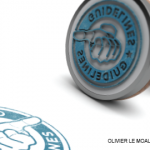He kicked off his talk with some humble common sense. He said, “When you’re running down the refractory pathway, the first thing you need to ask yourself is, ‘Was my original diagnosis correct?’”
Next, he spoke to diagnostic measures. As we all know, rheumatology remains a highly clinical specialty, particularly when it comes to the diagnosis and management of SpA. “The reality is that we don’t often use MRI. We go flying in the dark. And this is an area we need to get out of,” Dr. McGonagle said.
As for treatment, the 2022 ASAS EULAR guidelines recommended sequential monotherapy.5 That’s to say, start one biologic, and if that doesn’t work, pick a new one. He noted, “We do this and end up running out of road, so what should we do? I’d say most of you out there have empirically gotten some of these D2T cases under control using combination therapy that isn’t licensed.”
Combination Biologic Therapy
Dr. McGonagle first mentioned bimekizumab, an interleukin-17A and 17F (IL-17A/Fi) inhibitor that was recently approved by the U.S. Food and Drug Administration to treat moderate to severe plaque psoriasis, psoriatic arthritis (PsA), non-radiographic axial SpA and ankylosing spondylitis. From an insurance approval headache perspective, bimekizumab alone isn’t technically combination therapy. But the dual blockade of both IL-17A and IL-17F has shown promise over single IL-17 blockade alone. He highlighted an abstract at this year’s meeting that illustrated his point. He noted, “In psoriasis patients who failed a single IL-17 blocker, the additional blockade [with bimekizumab] seemed to buy back efficacy.”6
As for true combination biologic therapy, we’re starting to see more papers to this effect. “We’re learning a lot even through small studies. They’re starting to give us insights into disease,” he said. Some approaches, like the combination use of a tumor necrosis factor inhibitor (TNFi) and IL-12/23i were effective but accompanied by frequent infections. “So, we ran out of enthusiasm for blocking three cytokines,” he explained.7 “Combination strategies using a novel drug that targeted both TNFi and IL-17i at the same time also failed,” he continued.8
So where is there promise? Dr. McGonagle noted, “The state of the art is actually in the gastroenterology space. Unlike rheumatology, the gastro guys are able to do tissue biopsies pre- and post-intervention. The combination of guselkumab (IL-23i) and golimumab (TNFi) was superior to single biologic therapy with no added toxicity.”9 We can look forward to future data examining this combination in PsA soon.


